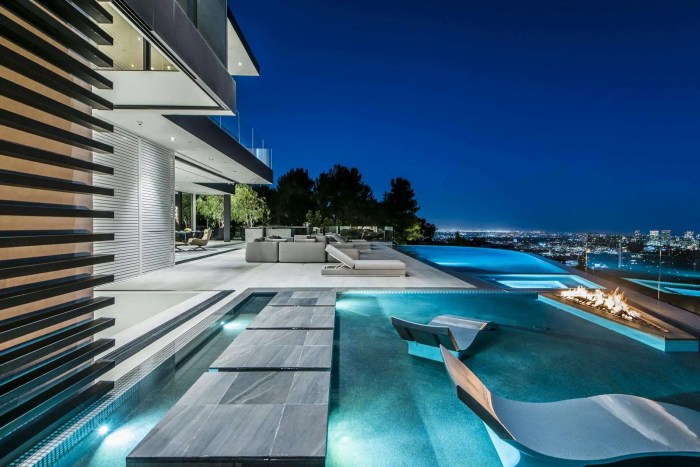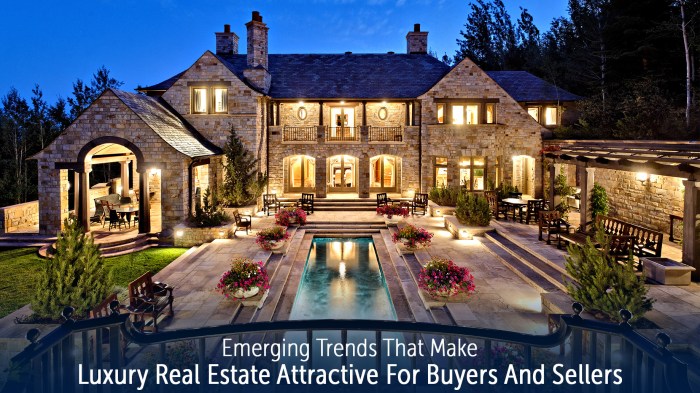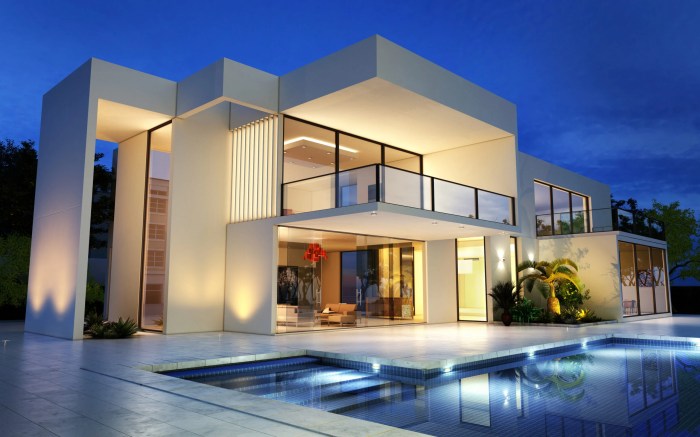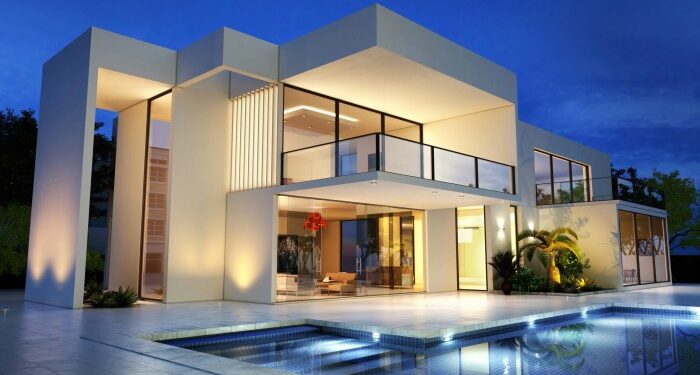Embark on a journey into the realm of luxury real estate, where opulence meets sophistication. Discover the allure of lavish properties, the intricate design details, and the exclusive market that defines this world.
Delve into the nuances of luxury real estate, from the factors influencing prices to the design elements that make these properties truly exceptional.
Overview of Luxury Real Estate
Luxury real estate refers to high-end properties that offer exceptional quality, design, and amenities, typically priced significantly higher than average homes. These properties are known for their exclusivity, prime locations, and lavish features that cater to the affluent market looking for top-tier living experiences.
Key Features of Luxury Real Estate
Luxury properties are characterized by:
- Prime Location: Situated in prestigious neighborhoods or waterfront settings with breathtaking views.
- High-Quality Construction: Built with top-of-the-line materials and superior craftsmanship.
- Luxurious Amenities: Spa-like bathrooms, gourmet kitchens, home theaters, and expansive outdoor spaces.
- Exclusivity: Limited availability and unique design elements that set them apart from standard properties.
- Privacy and Security: Gated entrances, advanced security systems, and secluded grounds.
Target Market for Luxury Real Estate
The target market for luxury real estate includes high-net-worth individuals, celebrities, business tycoons, and foreign investors seeking upscale properties as investments or primary residences. These buyers value prestige, privacy, and unparalleled luxury, willing to pay a premium for exceptional living spaces that reflect their affluent lifestyle.
Factors Influencing Luxury Real Estate Prices

Location, amenities, market trends, and economic conditions all play a significant role in determining the prices of luxury real estate properties.
Location Impact on Value
Location is one of the primary factors influencing the value of luxury properties. Properties situated in prestigious neighborhoods, waterfront areas, or with breathtaking views tend to command higher prices due to their desirability and exclusivity.
Role of Amenities
Amenities such as high-end finishes, state-of-the-art appliances, private pools, spas, and smart home technology can significantly increase the value of luxury real estate. These features enhance the overall lifestyle experience and appeal to affluent buyers looking for luxurious living spaces.
Market Trends and Economic Conditions
Market trends and economic conditions also play a crucial role in determining luxury real estate prices. During times of economic growth and high demand, prices tend to increase. Conversely, during economic downturns or market corrections, prices may experience a decline.
Factors such as interest rates, housing supply, and consumer confidence can impact the pricing dynamics of luxury properties.
Design and Architecture in Luxury Real Estate
When it comes to luxury real estate, design and architecture play a crucial role in setting these properties apart from the rest. From classic styles to modern trends, the design elements and architectural features of luxury homes are carefully curated to create a sense of opulence and sophistication.
Common Design Styles and Architectural Features
In luxury real estate, you will often find a mix of classic design styles such as neoclassical, Mediterranean, or Victorian, with modern architectural features like floor-to-ceiling windows, open floor plans, and smart home technology. These properties are designed to impress and showcase the finest craftsmanship and attention to detail.
- Neoclassical design often features grand columns, intricate moldings, and symmetrical facades, evoking a sense of timeless elegance.
- Mediterranean architecture, with its terra cotta roofs, arched doorways, and lush landscaping, creates a luxurious resort-like feel.
- Victorian homes are known for their ornate details, colorful facades, and intricate woodwork, exuding old-world charm and sophistication.
Importance of Interior Design and Craftsmanship
Interior design plays a pivotal role in luxury homes, as it enhances the overall aesthetic and creates a cohesive and inviting living space. High-end materials, bespoke furniture, and custom finishes are often used to elevate the interior design of luxury properties.
Craftsmanship is highly valued in luxury real estate, with attention to detail and quality being paramount in creating a truly exceptional living experience.
Traditional vs. Modern Luxury Home Designs
While traditional luxury home designs often focus on ornate details, rich fabrics, and classic furniture pieces, modern trends in the industry are leaning towards sleek, minimalist interiors, clean lines, and innovative technology integration. The blending of traditional and modern elements in luxury real estate creates a unique and dynamic living environment that caters to the tastes of discerning buyers.
Marketing Strategies for Luxury Real Estate

Luxury real estate requires a unique approach to marketing due to the high-end nature of the properties involved. Effective marketing strategies play a crucial role in attracting the right buyers and showcasing the exclusivity of these luxury properties.
Effective Marketing Channels for Luxury Properties
- Utilize high-end real estate websites and platforms that cater specifically to luxury properties.
- Partner with luxury lifestyle magazines and publications for targeted exposure to affluent audiences.
- Engage in social media marketing on platforms like Instagram and LinkedIn to reach potential buyers and investors.
- Collaborate with luxury real estate agents and agencies with a strong network of high-net-worth clients.
Role of Branding and Exclusivity in Marketing Luxury Real Estate
Branding plays a significant role in positioning luxury real estate properties in the market. Establishing a strong brand identity for a luxury property can create a sense of exclusivity and desirability among affluent buyers. The reputation and prestige associated with a luxury brand can significantly impact the perceived value of the property.
Use of Virtual Tours and High-Quality Photography
Virtual tours and high-quality photography are essential tools in marketing luxury real estate. These visual assets allow potential buyers to experience the property in detail and get a sense of the luxurious features and amenities it offers. High-quality images and immersive virtual tours can create a lasting impression and capture the attention of discerning buyers.
Last Point

In conclusion, luxury real estate offers a glimpse into a lifestyle of elegance and luxury. With its unique characteristics, captivating designs, and strategic marketing, this sector of the real estate market continues to fascinate investors and buyers alike.
Essential Questionnaire
What defines luxury real estate?
Luxury real estate is characterized by high-end amenities, prime locations, exquisite design elements, and exclusivity.
How do market trends affect luxury real estate prices?
Market trends play a significant role in determining the prices of luxury properties, with high demand often driving up prices.
What are some common design styles in luxury real estate?
Common design styles include contemporary, Mediterranean, modern, and traditional architecture, each adding a unique touch to luxury properties.
How important is branding in marketing luxury real estate?
Branding is crucial in positioning luxury properties in the market, as it helps create a distinct identity and appeal to the target clientele.
Do virtual tours play a role in marketing luxury properties?
Virtual tours are becoming increasingly popular in marketing luxury real estate, offering potential buyers a detailed look at the property from anywhere in the world.















